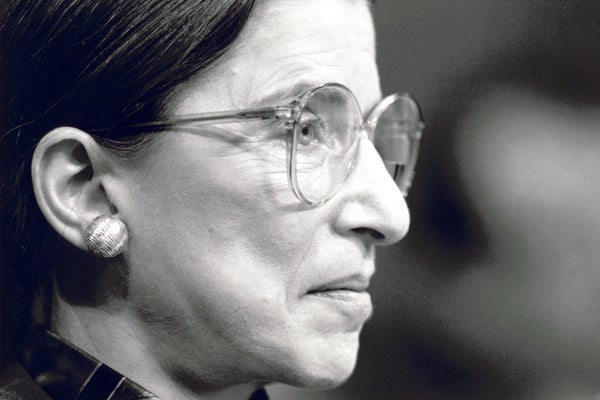Ruth Bader Ginsburg, a champion of women’s rights and one of the Supreme Court’s most liberal justices, has died. She was 87.
Ginsburg, who had been the court’s eldest justice, had suffered from several health problems in recent years, including a recent recurrence of cancer in her liver (Greenwire, July 17). She died “surrounded by her family at her home in Washington, D.C., due to complications of metastatic pancreas cancer,’ the Supreme Court said in statement released today.
Former President Clinton appointed Ginsburg to the nation’s highest bench in 1993. She was the second woman to serve on the court.
Her death leaves an opening on the Supreme Court, which President Trump could fill. Trump has already placed Justices Neil Gorsuch and Brett Kavanaugh on the bench, and a third pick would more deeply entrench the court’s conservative majority. The president recently released an updated list of prospective Supreme Court justices (Greenwire, Sept. 10).
Such a shift could affect how the court comes down on pending challenges to the Trump administration’s environmental agenda. Trump’s efforts to roll back Obama-era vehicle emissions, water permitting and other standards could eventually reach the justices.
Best known for her advocacy for equality between the sexes, Ginsburg was also thought of as a reliable vote for environmental interests that argued before the high court. In practice, her jurisprudence was much more complex.
In the landmark climate case American Electric Power Co. Inc. v. Connecticut, Ginsburg led the court’s unanimous opinion that said private entities and states could not sue power companies for their contributions to climate change under federal common law.
The 2011 case followed the court’s 5-4 decision—Ginsburg was in the majority—in Massachusetts v. EPA, which said that the federal government has the authority to regulate greenhouse gas emissions as “air pollutants’ under the Clean Air Act.
“The Act itself thus provides a means to seek limits on emissions of carbon dioxide from domestic power plants—the same relief the plaintiffs seek by invoking federal common law,’ Ginsburg wrote in American Electric Power.
“We see no room for a parallel track.’
Similar questions have come into play in a recent set of lawsuits from cities, counties and one state that are attempting to get big oil firms to pay for the local impacts of climate change. Attorneys for the municipalities have argued that their nuisance claims can move forward in state court.
Ginsburg also joined the court’s liberal wing in dissents in a pair of landmark Clean Water Act cases. Those minority opinions in Solid Waste Agency of Northern Cook County v. Army Corps of Engineers and Rapanos v. United States expressed support for a more expansive definition of jurisdictional waters under the Clean Water Act.
Before her appointment to the Supreme Court, Ginsburg served on the U.S. Court of Appeals for the District of Columbia Circuit after she was appointed by former President Carter.
Ginsburg started her career in academia. She taught at Rutgers University and her alma mater Columbia Law School, where she transferred from Harvard Law School after her husband, Martin Ginsburg, took a job in New York City.
Martin Ginsburg died in 2010. The couple met as undergraduate students at Cornell University and had two children, James and Jane.
Reprinted from Climatewire with permission from E&E News. E&E provides daily coverage of essential energy and environmental news at www.eenews.net.
